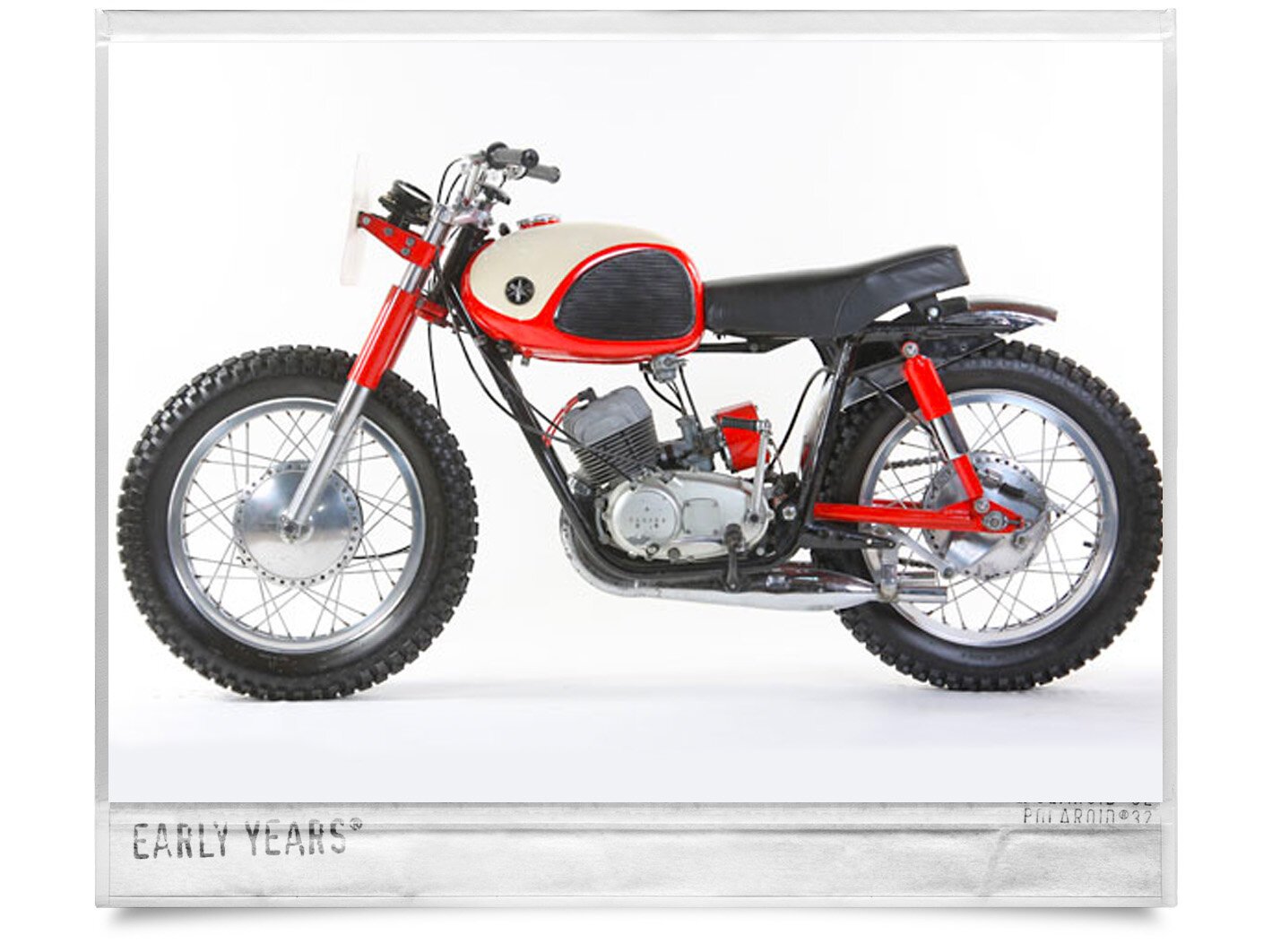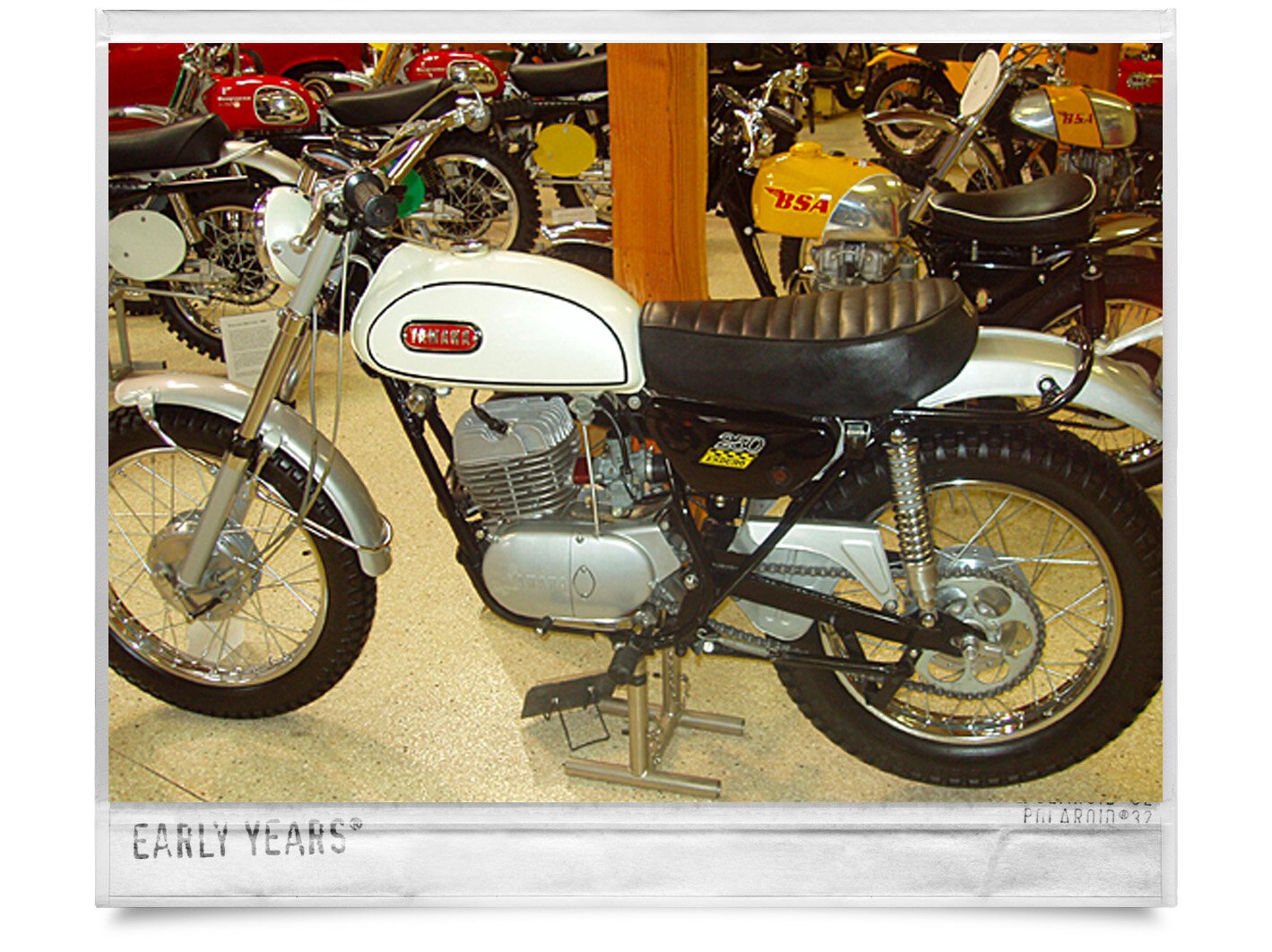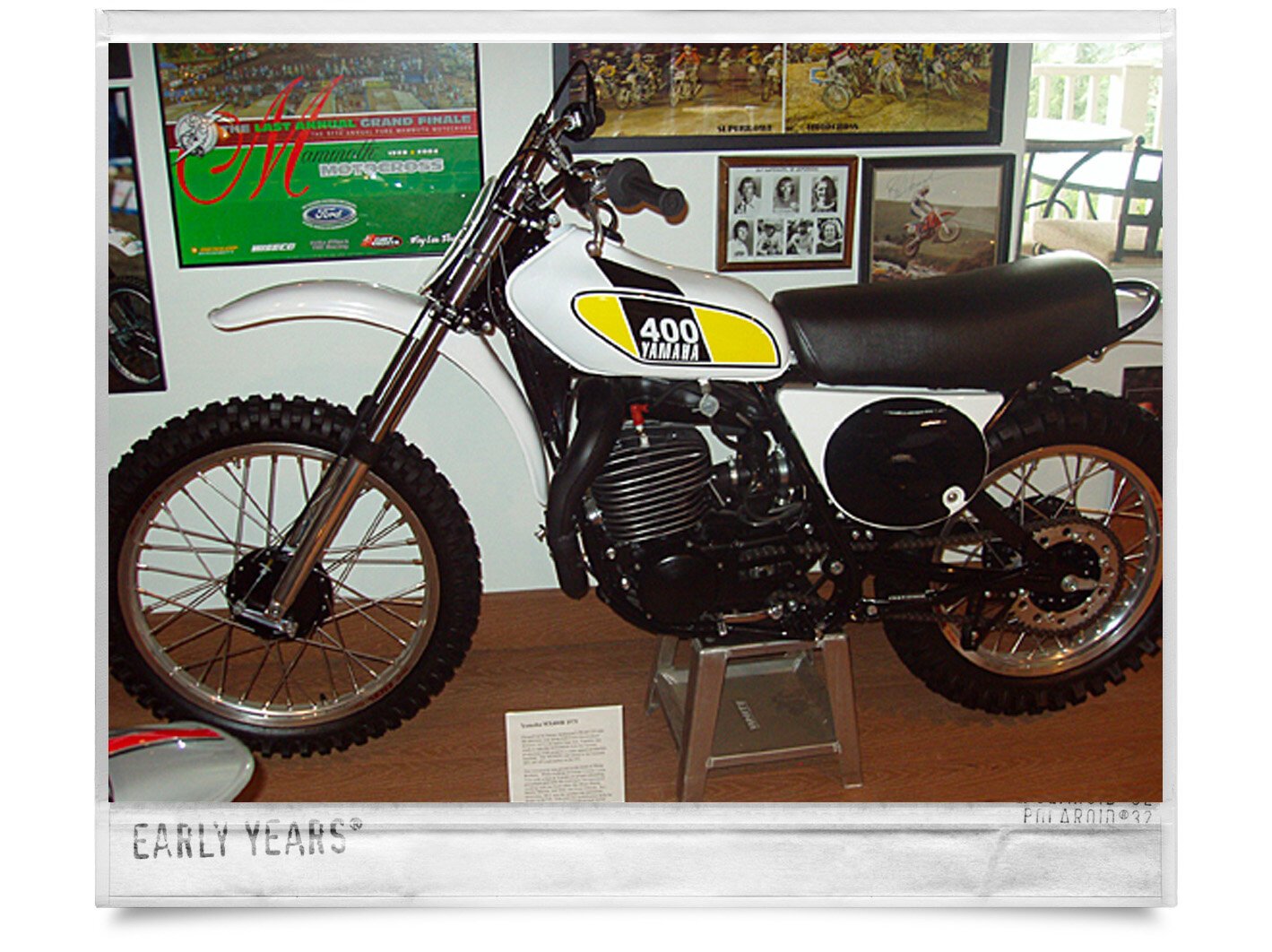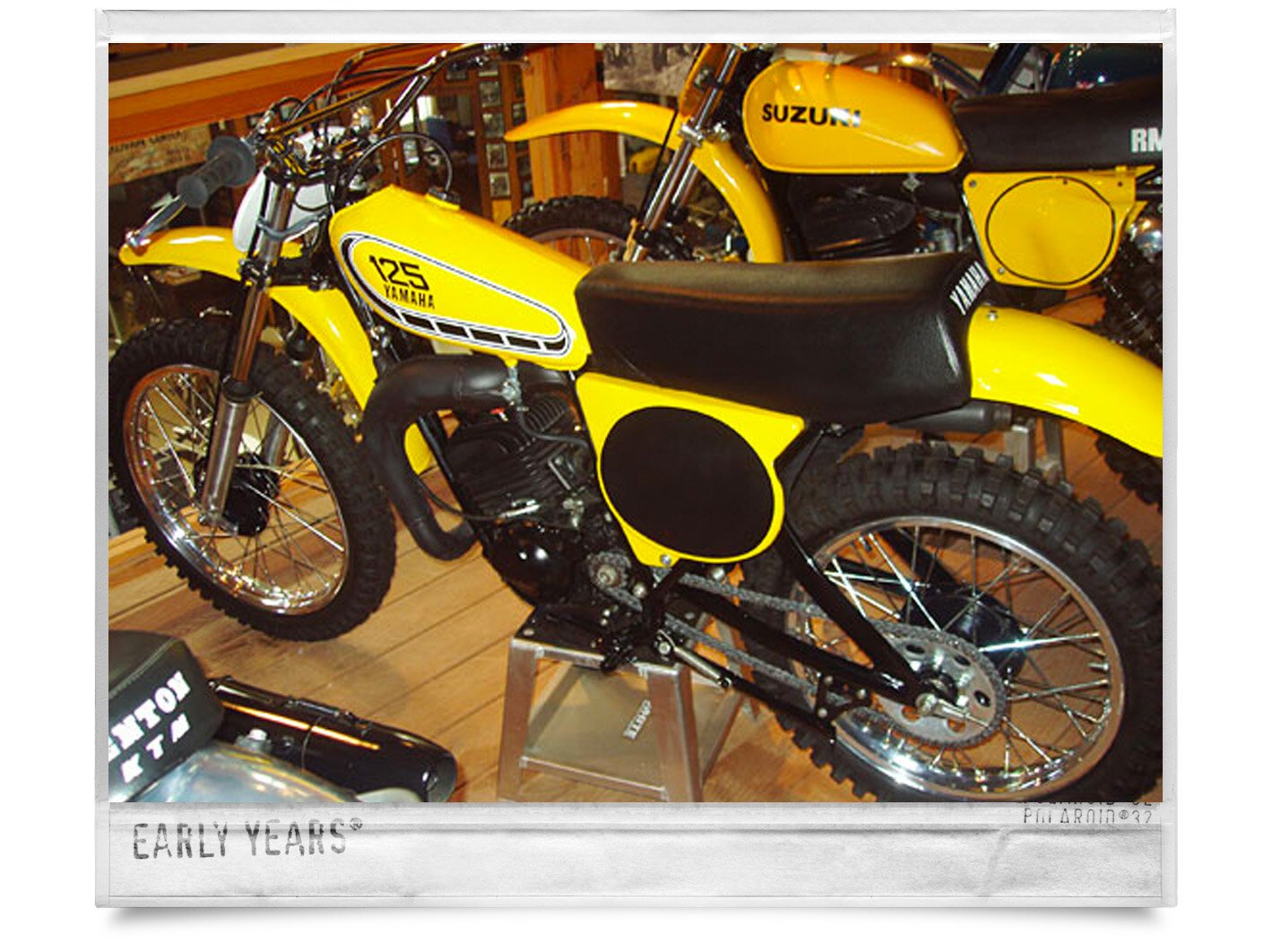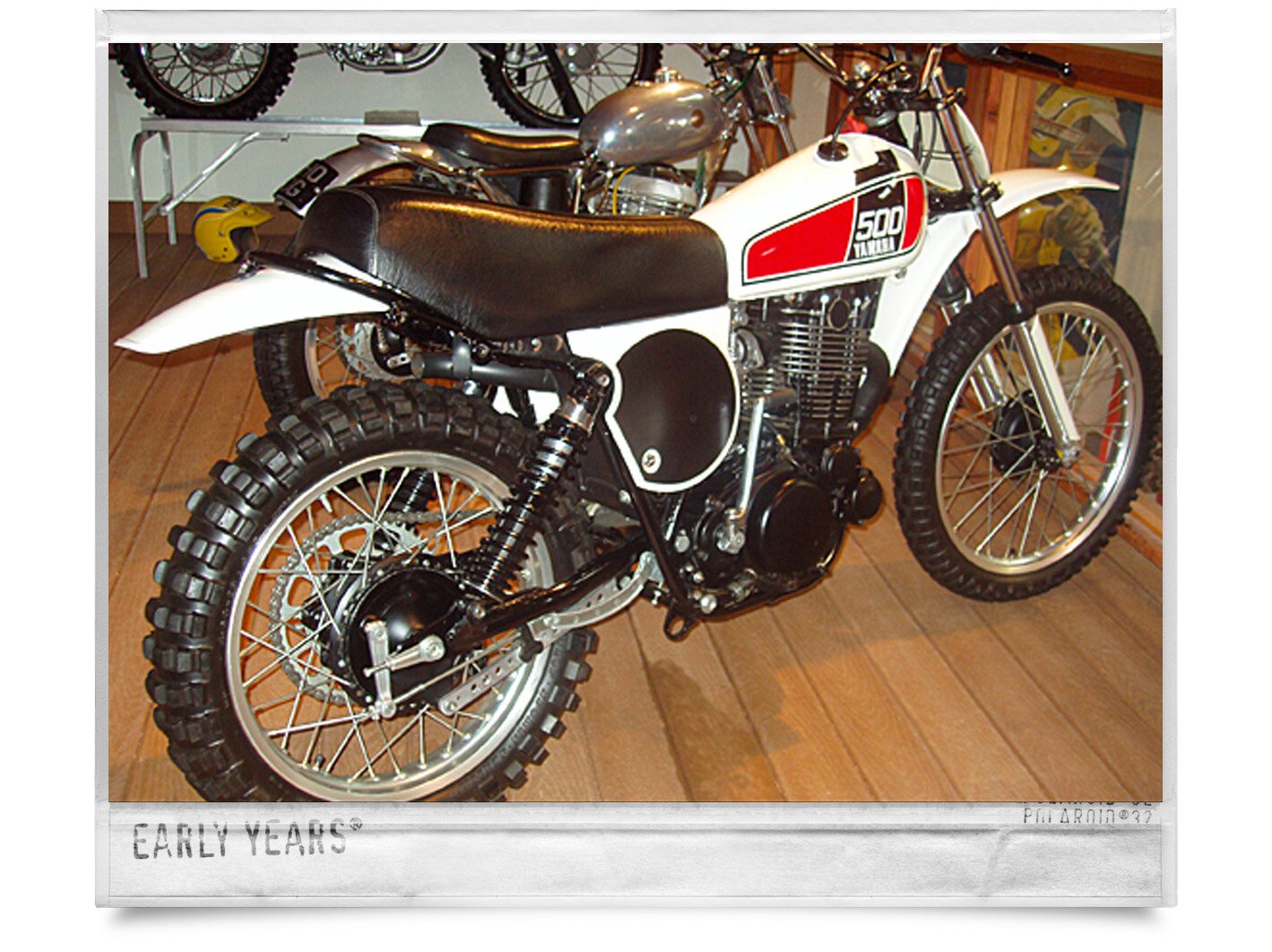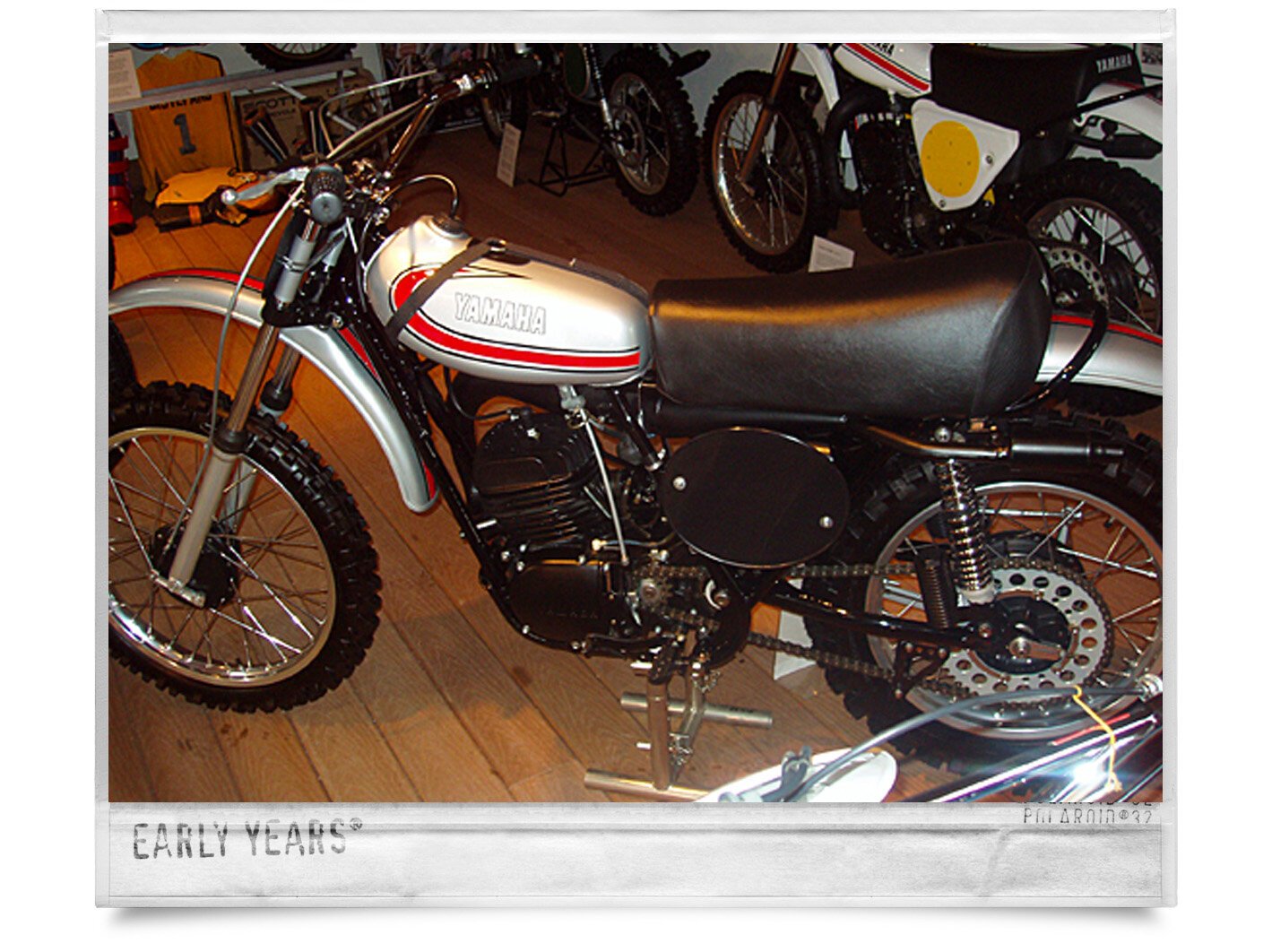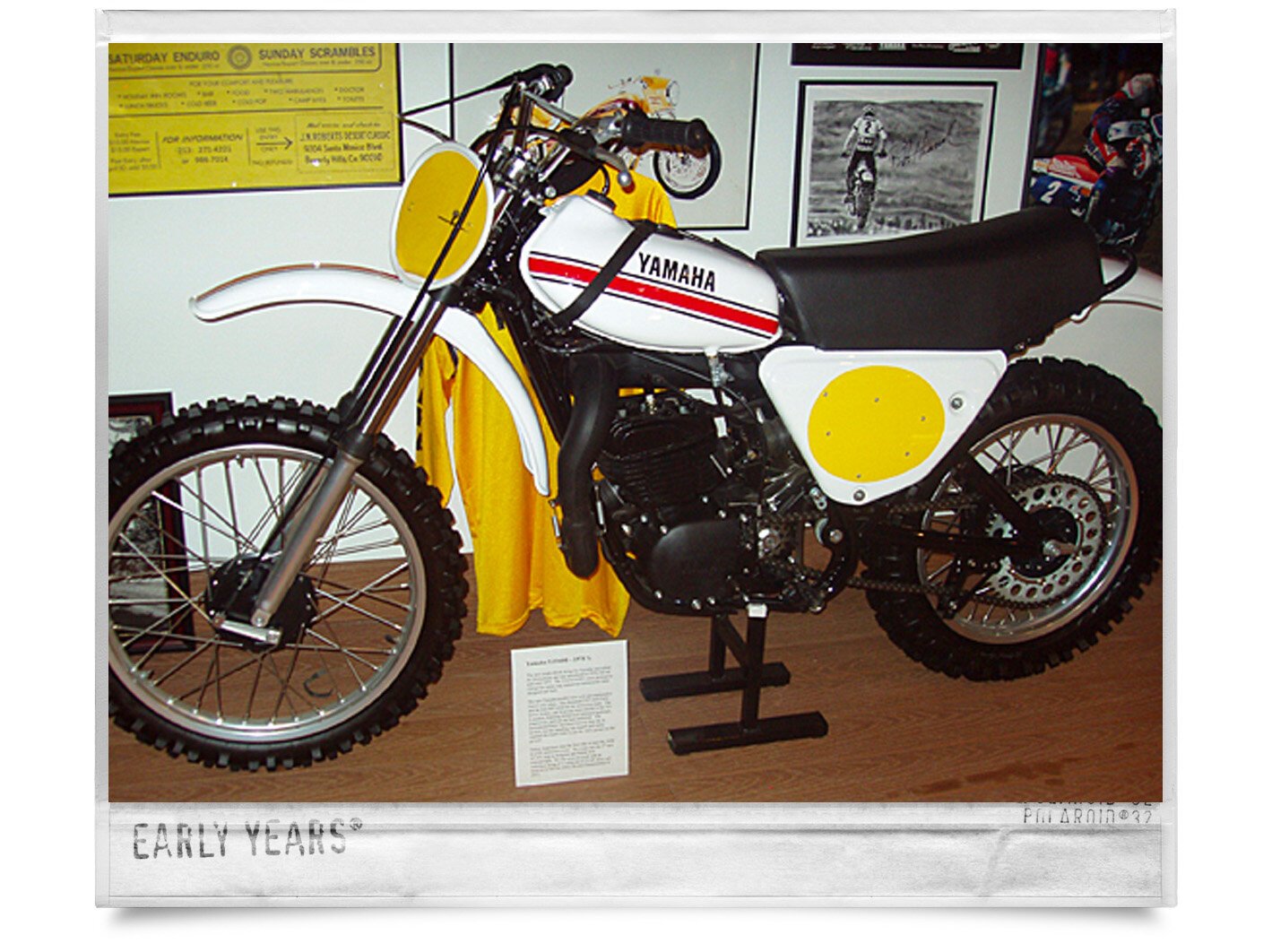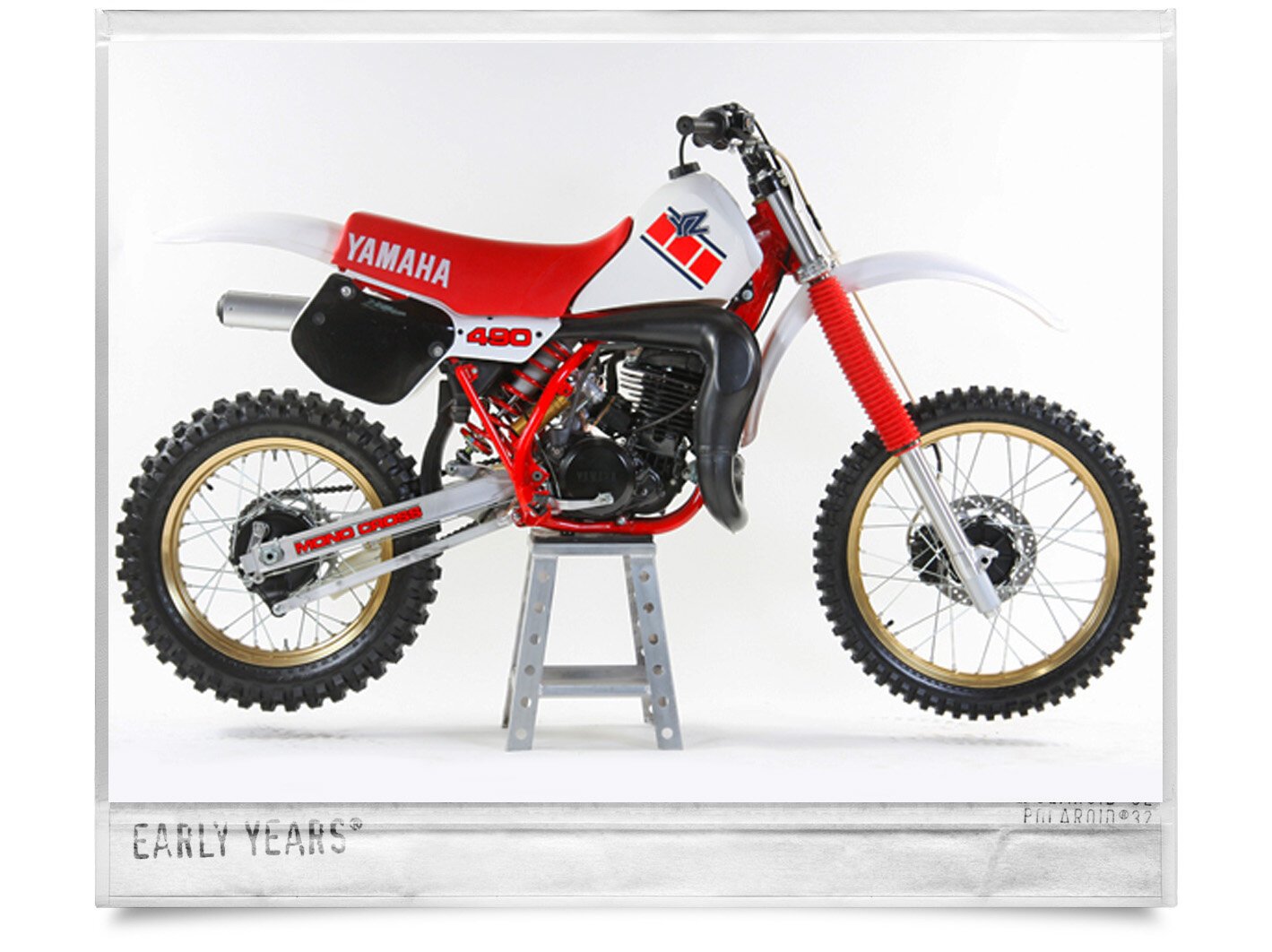Yamaha Ascot Scrambler / 1963
Southern California’s Ascot Park was the hotbed of flat-track racing in the western United States in the 60s and 70s. AMA rules required first year professional riders to compete on 250cc machines in the novice class until they made enough advancement points to move up to the Amateur class. Amateurs and Experts rode machines up to 750cc, pretty much exclusively 4-stroke twins or 500cc 4-stroke singles.
The top prospects in the Novice class often showed up with twin-cylinder Yamaha TD1 engined machines with custom frames built by companies like Trackmaster and Redline. On Ascot’s super sticky 1/2 mile oval track, it really wasn’t fair as the twin cylinder machines had more than a 5 horsepower advantage over single cylinder bikes from Europe.
Yamaha decided to seize this opportunity and the publicity that came out of winning races by introducing the Ascot Scrambler. The limited production model, set up for scrambles and flat-track, was a derivation of the street going YDS2 model using aluminum cylinders similar to the TD1 road racer model. Carburetors were 24mm Mikunis – larger than the 22mm units on the S2 but smaller than the 1 1/16″ Amals that came standard on the TD1 and the machines were fitted with expansion chambers. Brakes were the same as the TD1 as was the frame. Naturally, all street going equipment was shed including the front fender.
Sales of this model were indeed brisk, but owners soon found out that handling was sub-par to the custom frame twins that were being raced at Ascot. Imagine a 35 horsepower machine with a peaky powerband and a short wheelbase. Production of these very unique machines went from 1962 to 1967 with very few changes. The 1965 and later model had a fiberglass racing seat which is the only way to tell the difference between the earliest models.
Ascot’s have become one of the most desirable early Japanese racing machines. Unfortunately, they are very difficult to find. The Early Years of Motocross Museum found this one in London, England.
Yamaha DT1 250cc Enduro / 1968
Possibly the most important Japanese bike ever produced, the DT1 broke new ground in the motorcycle market. For one, the DT1 was the first attempt by the Japanese to build an all-purpose dirt/street motorcycle that would appeal to the hard core enthusiast. With the available GYT Kit (Genuine Yamaha Tuning) the DT1 would transform from a docile all-around machine to a competitive race bike in scrambles, desert, or motocross.
I’ll never forgot my first setting eyes on a DT1 – it was December of 1967 at the Anaheim Cycle World show, and I placed an order the next day with my dealer, Rustan Motorcycle Sales. When the bike arrived in April, engine number 312, I polished it in the showroom for a week before Bob Rustan would let me take it out of the store.
The example you see here has 45 original miles, was won by Pappy Watts at a raffle, and finally came to my collection after five years of pestering the last owner, my friend Wayne Meridian of PEP. It is in un-restored original condition.
Yamaha RT1-MX / 1971
This is a second year example of Yamaha’s entrant into the open motocross class. The chassis was almost unchanged from the DT1 Enduro that was introduced in 1968 and limited the competitiveness of the RT1. Lights were stripped off of the MX version and the factory GYT kit (Genuine Yamaha Tuning) was standard equipment.
The most attractive thing about the RT1 was the price ($995), much cheaper than the European open bikes. Customers were also attracted to the simpler and cleaner design of the Yamaha, although serious racers never considered the open class Yamaha.
It would be three years later before Yamaha entered the open class with a serious and competitive bike that would be dubbed – YZ360A.
Bill West of Vintage Works did the restoration on this machine and it now resides in the Early Years of Motocross Museum.
Yamaha DT1 MX / 1971
This is a second year example of Yamaha’s entrant into the 250cc motocross class. The chassis was almost unchanged from the DT1 Enduro that was introduced in 1968 and limited the competitiveness of the DT1. Lights were stripped off of the MX version and the factory GYT kit (Genuine Yamaha Tuning) was standard equipment.
The most attractive thing about the DT1 was the price ($895), much cheaper than the European open bikes. Customers were also attracted to the simpler and cleaner design of the Yamaha, although serious racers never considered the 250 class Yamaha.
It would be three years later before Yamaha entered the 250 class with a serious and competitive bike that would be dubbed – YZ250A.
Brand new and only ridden down the alley of the Chicago, Illinois Yamaha dealer, it’s hard to fault a 37 year old motocross bike that has never seen dirt!
Purchased from Terry Good’s MX Works Bike collection!
Yamaha SR500
INFO COMING SOON.
Yamaha MX400B / 1975
Pumped up by Hakan Andersson’s World 250 title the previous year along with Pierre Karsmakers’ dynamic 1973 US Open Class win, Yamaha was ready to take the monoshock from the limited production YZB model to a mass appeal production machine. The MX400B was catnip to the buoyant MX and off-road market in the US.
This motorcycle was pivotal in the birth of White Brothers. While working at Orange County Cycle, Tom took a class at Yamaha on proper rebuilding procedures and took this training to the next level working with top local riders like Bruce Baron, Morris Malone, and Mike and Scott Gillman. In a short time, OCC was the number one motocross dealer in the US. Tom took the modification skills he developed working on the monoshock and started Tom White Cycle Specialties in 1975. In early 1976, brother Dan left his position at Kawasaki to join Tom and the name was changed to White Brothers Cycle Specialties.
Yamaha YZ125C Motocross / 1976
1975 was a ground breaking year for motocross. The 125cc World Championship was introduced and Yamaha unveiled the first 125cc production monoshock motocrosser. Introduced in 1975, but produced for the 1976 model year, this first 125cc 6-speed monoshock motocrosser set a new standard for all 125 racers and manufacturers. The chrome bore was replaced with a more serviceable cast sleeve and horsepower was increased to 20.18. The reed case was increased from 2 to 4 pedals and the intake was further aided by changing from a 28mm Mikuni to a 38.
Yamaha designed the race oriented 125 YZC to combat the Hondas and Suzuki’s and the end result was a very competitive bike that provided the power and handling that would propel it to the top of the class. Bob Hannah raced a full works 125cc to give Yamaha its first 125cc National Championship.
This YZ125C was meticulously restored by David Rector and is on loan to the Early Years of Motocross Museum.
Yamaha TT500 / 1976
INFO COMING SOON.
Yamaha YZ250A / 1974
When the DT1 was introduced in 1968, Don Jones initiated development of the machine for professional level motocross for sons, Gary and Dewayne. Their efforts didn’t go unnoticed by the Yamaha factory and very soon a working relationship was established. In 1970 Gary Jones won his first race on a Yamaha closely related to what would become the production YZ-A series. Gary went on to win the 250 National Championships in 1971 and 1972 on a hybrid version of the earliest Jones modified DT1.
By 1971, Torsten Hallman appeared in GP’s racing a similar lightweight Yamaha motocrosser, sending a message to the European establishment that another Japanese manufacture was joining the fray.
Notice the low slung engine, the whittled down forks and hardware, and the gas tank attached with Velcro straps. These are all Don Jones initiated modifications to improve the weight, handling, and ergonomics of the DT1 hybrid.
This machine was meticulously restored by Frans Munsters in the Netherlands and shipped to the Early Years of Motocross Museum.
Yamaha YZ360B / 1974
The new single-shock design by Yamaha was called the Monoshock and was introduced in 1974, but not sold until 1975. The YZ250/360B’s were destined to change the entire way motocross motorcycles were designed and built.
The new Yamaha models were sold and marketed to expert only riders. One thousand 250’s were built and far less 360’s ever hit the motocross track. The motor, brakes, and front end were similar to the YZ-A models, featuring drilled and lightened hardware, magnesium, and just the bare essentials. The monoshock frame was much heavier than the A models, but the handling was superb and really enabled the expert rider to put the 360’s power on the ground.
Yamaha YZ490 – Broc Glover / 1985
The 1985 AMA 500cc National Championship would be the sixth and final championship for Broc Glover who’s career included 50 National wins, a number that was only recently topped by Jeremy McGrath and Ricky Carmichael. It would prove to be one of the most difficult championships as Glover was hampered by a nagging wrist injury and a less that competitive motorcycle. The AMA instituted the production rule at the beginning of ’85 which meant Broc would compete for his third 500cc National Championship on what many considered one of the worst motocross machines ever built.
The YZ490 was introduced in 1982 after a solid run for the YZ465. Sadly, the 490 was heavier than the 465, nowhere near as reliable, difficult to start, had grim suspension, vibrated, and was impossible to jet. This coincided with the popularity of 500 class machines waning, so Yamaha stuck with this poor design up until 1991.
If you jetted it rich enough to keep from seizing, it would blubber, foul plugs, and produce little power. If you jetted it to run strong, it would detonate and eventually seize. It came with air leaks, wandering ignition, gimpy motor mounts, and a bad case of Yama Swap! Yamaha issued a mountain of service bulletins to try and fix the problems. None of them worked!
One of the features that was unique on the 1985 model was the BASS system or Brake Actuated Suspension System. The idea was to decrease compression damping when the rear brake was applied. Most riders found the system didn’t work and in 1986 the Bass was removed.
The pictured example didn’t have any of these problems! Why, the bike was a present from Yamaha to Broc Glover and he has never started or ridden the bike. The bike is on loan to the Early Years of Motocross Museum.

